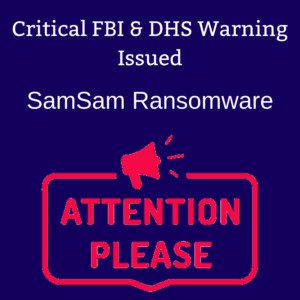Cybersecurity threats have evolved significantly over the years, with ransomware emerging as one of the most persistent dangers. Among the many ransomware families, SamSam ransomware has distinguished itself as a particularly dangerous strain, responsible for high-profile attacks on hospitals, government agencies, and private companies. This article delves into the nature of SamSam ransomware, its attack methods, and how organizations can protect themselves.
What is SamSam Ransomware?
SamSam ransomware is a type of malware designed to encrypt files on a victim’s computer or network, demanding a ransom payment in exchange for the decryption key. Unlike traditional ransomware attacks that rely on phishing emails, attackers use brute-force techniques, exploiting weak passwords and vulnerabilities in remote desktop protocols (RDP) to gain unauthorized access to systems.
How Does SamSam Ransomware Work?
SamSam ransomware operates differently from typical ransomware strains. Here’s a step-by-step breakdown of its attack process:
- Initial Access – Attackers gain entry by exploiting weak RDP credentials or software vulnerabilities.
- Lateral Movement – Once inside, they move through the network, escalating privileges to gain full control.
- Payload Deployment – The ransomware is deployed manually, ensuring maximum damage by encrypting critical files and systems.
- Ransom Demand – Victims receive a ransom note demanding payment, typically in Bitcoin, in exchange for the decryption key.
Notable SamSam Attacks
SamSam ransomware has been responsible for several significant cyberattacks, including:
- Atlanta City Government (2018): The attack disrupted municipal services, costing the city over $17 million in recovery efforts.
- Healthcare Institutions: Hospitals across the U.S. have been targeted, causing severe operational disruptions.
- Educational and Government Sectors: Various institutions have faced substantial downtime due to SamSam infections.
Preventing SamSam Ransomware Attacks
Organizations can take proactive steps to minimize the risk of SamSam ransomware infections:
- Strengthen Password Security: Use strong, unique passwords and implement multi-factor authentication (MFA) for remote access.
- Patch Vulnerabilities: Regularly update software and operating systems to fix security flaws.
- Limit RDP Access: Disable RDP when not needed and use VPNs to secure remote connections.
- Implement Network Segmentation: Restrict access between different segments of the network to minimize the spread of ransomware.
- Regular Backups: Maintain offline and cloud backups to quickly recover encrypted data without paying the ransom.
Conclusion
SamSam ransomware has proven to be a highly disruptive cyber threat, targeting organizations with weak security postures. Understanding its attack methods and implementing strong cybersecurity measures are crucial to mitigating its impact. Organizations must remain vigilant, continuously improving their defenses to stay ahead of cybercriminals. Investing in robust cybersecurity strategies today can prevent significant financial and operational damages in the future.


